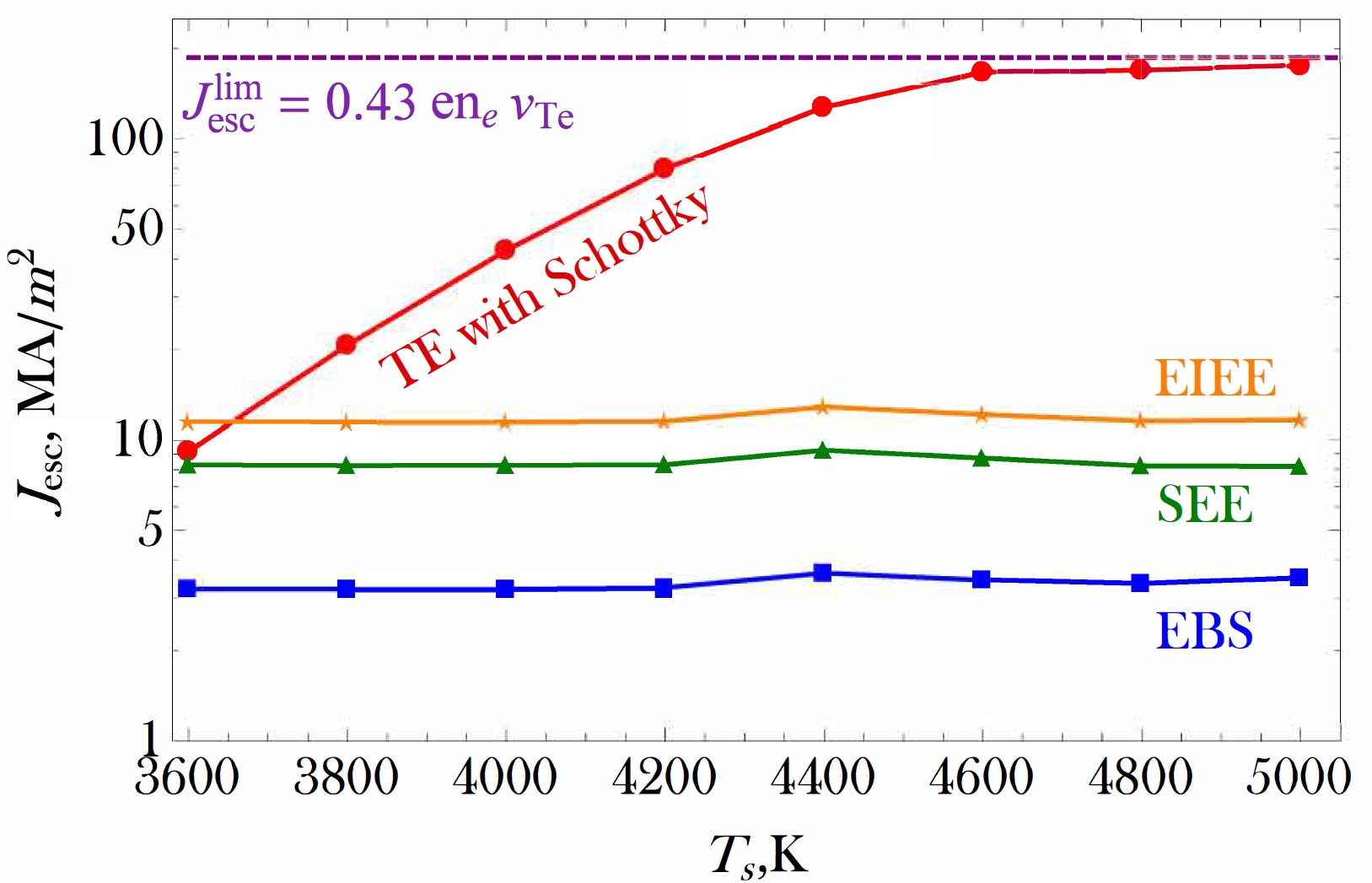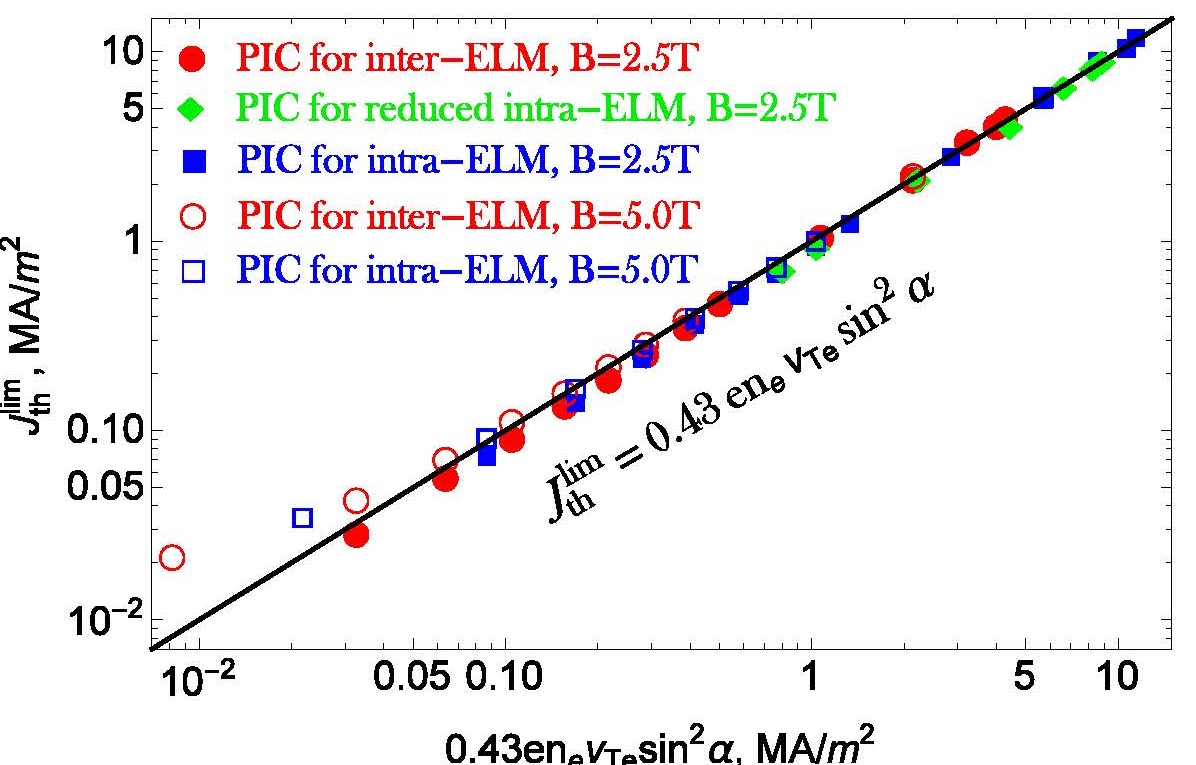Emissive sheaths in magnetized plasmas
The project aims to contribute to the understanding of the sheaths surrounding hot refractory metal surfaces in the dense magnetized plasma environment of present-day and future fusion devices. The practical goal is to provide accurate analytical expressions for the non-ambipolar currents that constitute boundary conditions for computational tools simulating melt motion.
Sheaths are thin regions of strong electrostatic fields that separate quasineutral plasmas from material boundaries. In spite of their small extent, they are important for plasma-surface interactions in fusion plasmas since they determine the incident heat flux that could cause material melting, the incident ion flux that ultimately leads to sputtering or retention and even the escaping non-ambipolar current that essentially drives melt layer motion. When electron emission from the material boundary is significant, the emitted electron populations need to be included in the self-consistent description of the sheath because they could strongly affect the charge, particle and power balance.
In contemporary and future fusion devices, the material surface temperature can become extremely high during its interaction with dense hot plasmas leading to strong thermionic emission. In fact, at the strike point position of typical Type-I ELMing H-mode discharges, the nominal thermionic current emitted from tungsten at its melting point vastly exceeds the incident plasma currents. Complications arise due to the formation of a virtual cathode and the Larmor gyration of the emitted electrons, which eventually strongly suppress the emitted thermionic current. The physical scenario could be even more complicated during the ELM periods of future fusion devices such as ITER, where secondary electron emission as well as electron backscattering should also be substantial and where thermionic emission should be strongly entangled with field emission.

The project focuses on the construction of accurate semi-empirical expressions for the non-ambipolar current that escapes the sheath / pre-sheath surrounding hot tokamak tungsten surfaces. This quantity constitutes one of the most important plasma boundary conditions for computational tools that study melt layer motion and surface deformation. (1) Analytical descriptions of the emission strength as well as the energy and the angular distribution of the emitted electrons are constructed based on state-of-the-art experiments and theoretical approaches. (2) The electron emission models are implemented in particle-in-cell (PIC) codes. (3) PIC simulations of the electrostatic Debye sheath and the magnetic Chodura pre-sheath are carried out for different plasma parameters, magnetic field configurations and surface geometries. (4) Accurate semi-empirical expressions that describe the escaping non-ambipolar current are identified on the basis of plasma sheath theory.

Funding agency: VR 2018-05273 , Horizon 2020 EUROfusion Consortium 633053, Horizon Europe 101052200 EUROfusion
External Collaborators: Michael Komm - Ales Podolnik, IPP, Prague, Czech Republic
